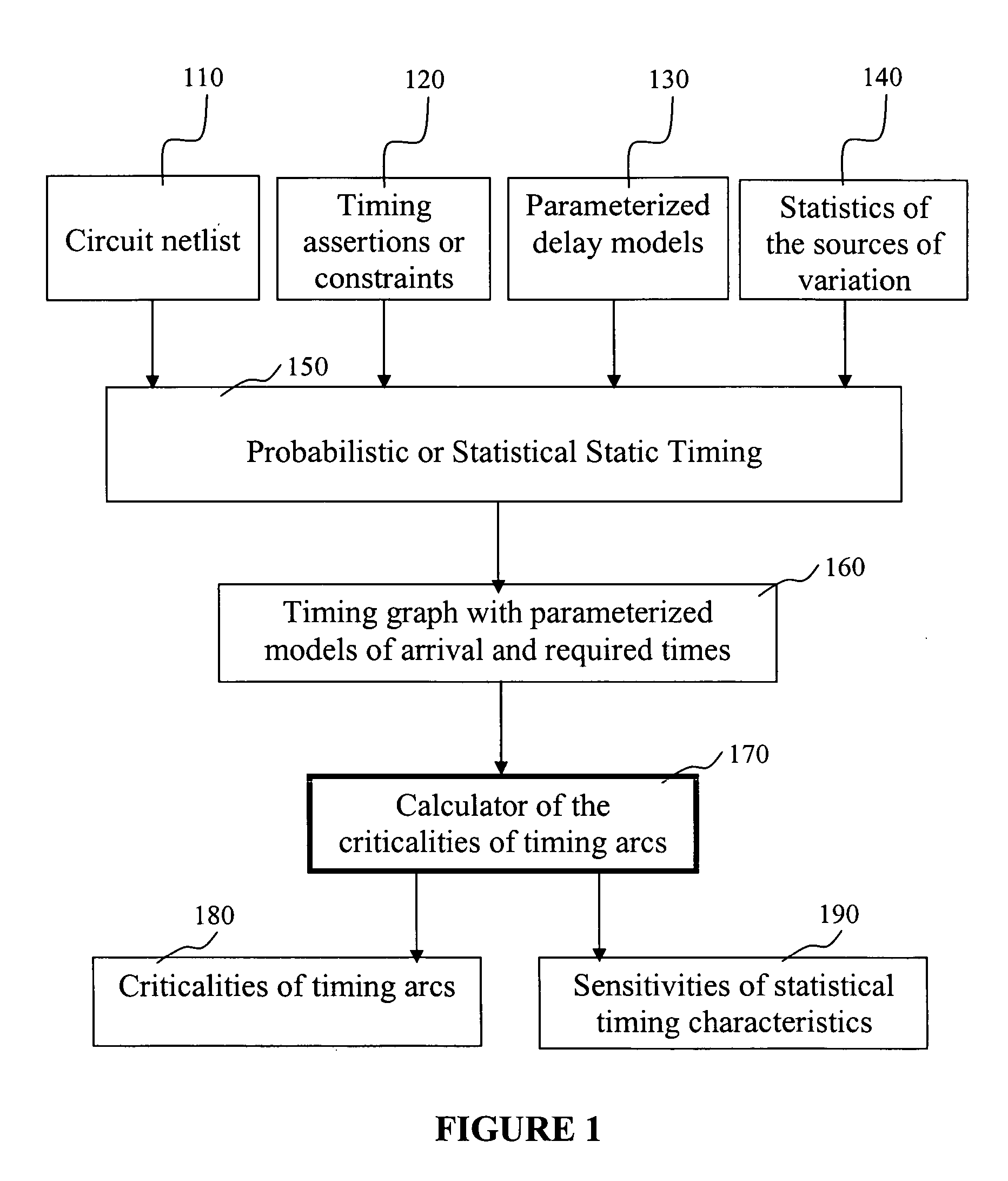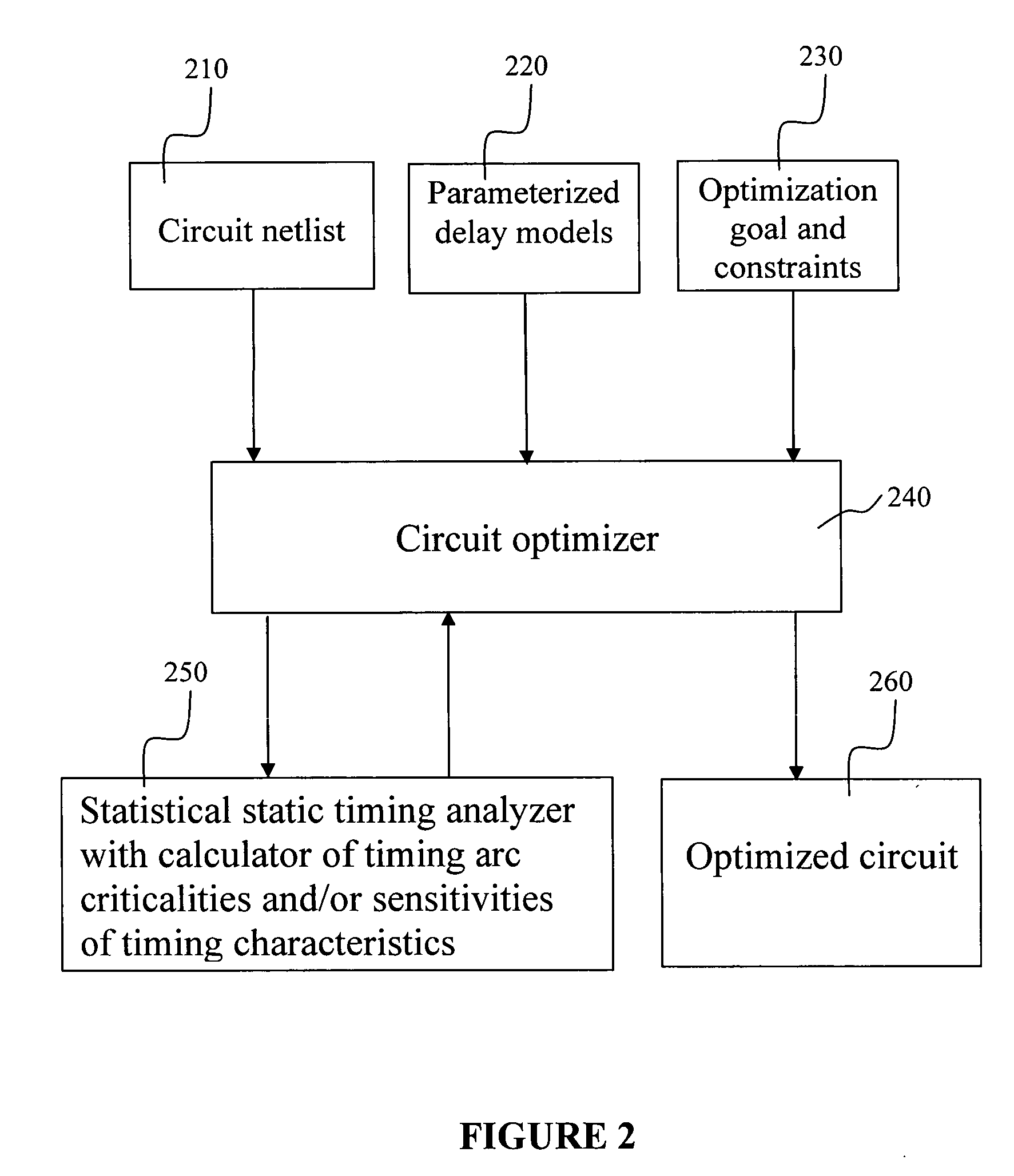System and method of criticality prediction in statistical timing analysis
a statistical timing analysis and criticality prediction technology, applied in the field of design automation of digital integrated circuits, can solve problems such as inefficiency and inability to correctly take correlations into account, the difficulty of predicting the probability distribution of circuit delay and criticality of signal propagation arcs, and the sufferance of prior-art methods of predicting criticality probabilities
- Summary
- Abstract
- Description
- Claims
- Application Information
AI Technical Summary
Benefits of technology
Problems solved by technology
Method used
Image
Examples
Embodiment Construction
[0030] Aspects of the invention describe a system and method for predicting criticality of signal propagation arcs in statistical timing analysis of a digital circuit. The criticality of a signal propagation arc is the probability of the arc being critical (i.e., the probability of manufacturing a chip in which a timing arc belongs to a timing-critical signal propagation path).
[0031]FIG. 1 is a schematic block diagram of a statistical static timing analysis system 100 in accordance with an embodiment of the invention. System 100 is alternatively referred to herein as tool 100. System 100 is configured to receive a plurality of inputs 110, 120, 130, 140. The first input is a circuit netlist 110 representing the structure of a circuit to be analyzed. The second input is a set of timing assertions 120 (e.g., timing constraints). The timing assertions 120 typically include arrival times at the primary inputs, required arrival times at primary outputs, information about phases of a cloc...
PUM
 Login to View More
Login to View More Abstract
Description
Claims
Application Information
 Login to View More
Login to View More - R&D
- Intellectual Property
- Life Sciences
- Materials
- Tech Scout
- Unparalleled Data Quality
- Higher Quality Content
- 60% Fewer Hallucinations
Browse by: Latest US Patents, China's latest patents, Technical Efficacy Thesaurus, Application Domain, Technology Topic, Popular Technical Reports.
© 2025 PatSnap. All rights reserved.Legal|Privacy policy|Modern Slavery Act Transparency Statement|Sitemap|About US| Contact US: help@patsnap.com



